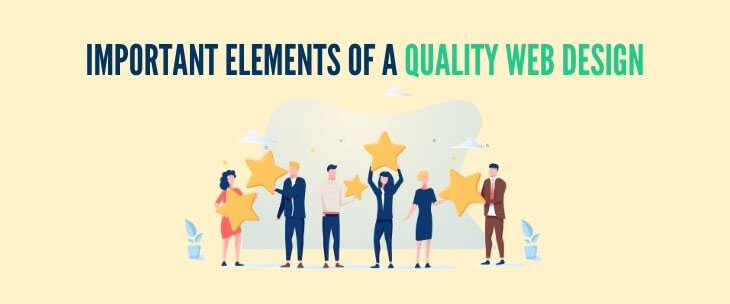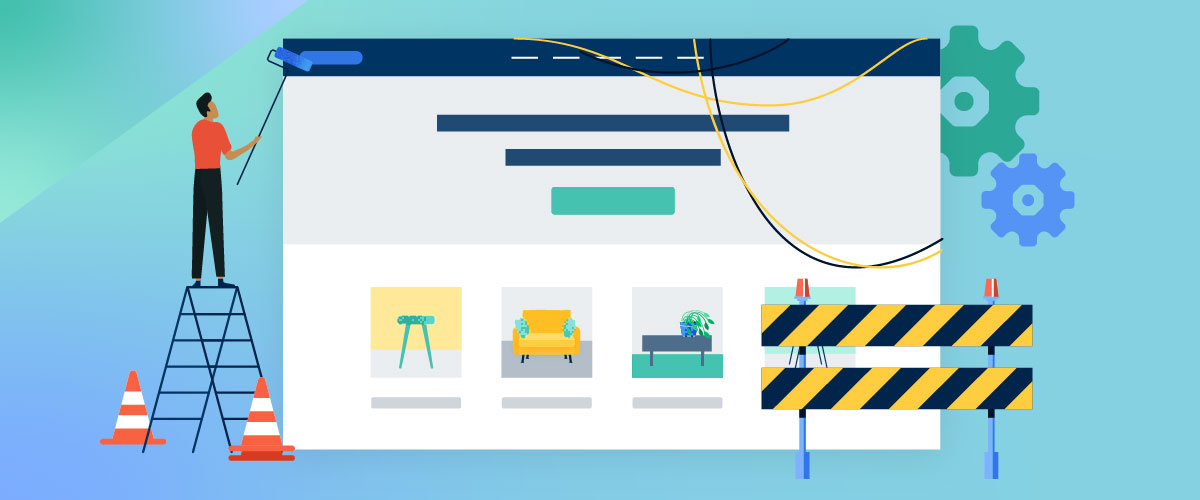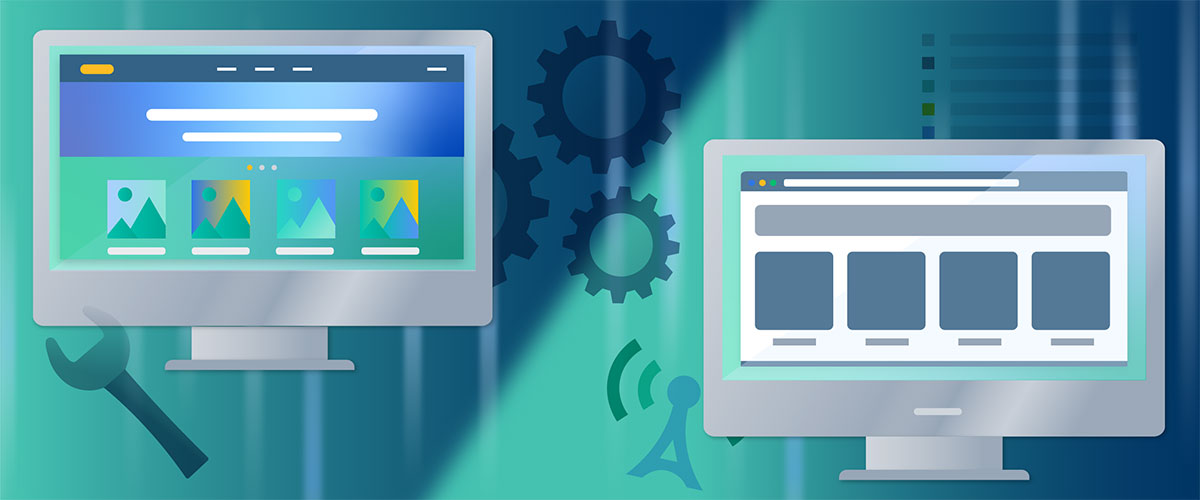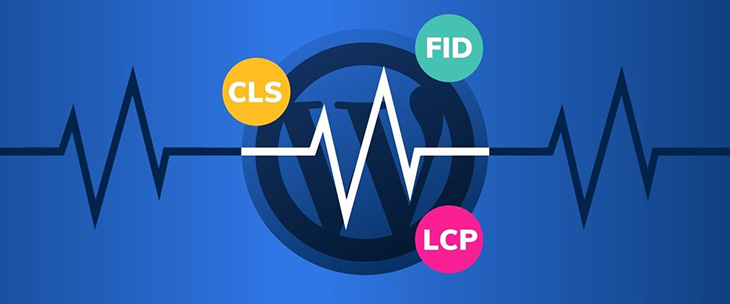Every business needs a website. Websites are where people learn more about your company and what products and services you offer. When people hear about a business, one of the first things they do is input the company’s name into a search engine to find the website or other details, such as the hours of operation or address.
Websites are necessary for every business, and they need to be attractive and functional to maintain effectiveness. Websites make your business look professional; having a website creates credibility in the eyes of consumers. Websites also attract new customers through search engines. People search online every day for key terms that could end up leading them to your business. Exceptional web design drives conversions and brings more potential customers to your site. A website also provides a digital space to store your products and services. You can show potential customers what to expect and what you provide, all with a simple online platform.
Discover the most important elements of a quality web design to start achieving your goals, increasing your online visibility, and increasing conversions.
Important Elements of a Quality Web Design
Certain elements are essential to include in your company’s website design. Web design is more than just aesthetics and “curb appeal.” Many businessowners fall into the trap of focusing too much effort and resources on design rather than on functionality. It’s essential to have attractive aesthetics on your site to draw web users’ attention, but functionality is even more important. Below are a few critical things to keep in mind when you’re designing your small business website.
Performance of the Site
The performance of your website is more important than any visual design elements. A site needs to work as intended and be user-friendly. Users are looking for functionality more than anything else on a website, so focus your funds and time on developing a website that works from the customers’ perspectives.
Site Load Time
Site load times are potentially the most critical elements of website design. A site load time is the amount of time it takes for a website to load when someone visits it. Most people will not wait more than a few seconds for a webpage to load before clicking away from it entirely.
Many businesses invest in digital marketing methods, such as pay-per-click advertising, to reach sales goals. PPC is much less effective with slow site load times. Higher load times also affect the organic rankings of a website for different search engines. Load speeds are some of the main determining factors in organic search engine rankings.
Behind-the-Scenes Items
There are many aspects of a website that matter but that consumers never even see. These are especially critical for companies to take note of. Some of these unseen things include how many pages a website has, site optimization, and the keywords used in the content. These are all crucial to incorporate into your web design.
Navigation: How It Works
A website’s navigation is an essential element for businesses, but improving the navigation structure can prove elusive if you don’t know where to begin. It can feel necessary to fit everything your website has to offer in the navigation, but there are other options. Prioritizing user-friendliness means simplifying the navigation as much as possible. When too much information is packed into the navigation, the site can become overwhelming. Overpacked navigation can confuse and deter users from making purchases or exploring your site further.
Focus on making the navigation a simple as possible, mainly because most users will be accessing your website through a mobile platform, where large navigations are nearly impossible to utilize. A good rule of thumb is to keep your main navigation under ten items, with six being ideal. You can nestle your “about us” section and other nonessential items in the footer menu rather than in the main navigation. Many companies choose to place their blogs, careers pages, about us pages, and other nonessentials in their footer menus to clear space for other conversion-driving pages in the main navigation.
The Importance of Visual Design
The visual design of a website is essential. It’s what compels customers to navigate further within the site. However, visual design elements are not factors in initially drawing people to your site. This makes them secondary to other features such as search engine optimization, site speeds, and quality content.
Visual design is vital to making the site look professional. However, keep in mind that unless your visual design creates issues with seeing content, such as unreadable text color or too-vibrant background colors, users will rarely stop exploring your site due to poor aesthetics. After focusing on the more technical elements of web design, you can focus on visual design elements, with the right time and resources.
Adding visual design elements is a delicate balance between attractiveness and function. Too many fancy, intricate design elements can negatively affect the site speed.
Be sure to keep your calls-to-action easy to see. Visual design should be centered on the calls-to-action to help consumers’ eyes land on these vital elements.
Most people know the phrase “content is king,” which reigns true even in web design. Content is essential to the visibility and functionality of your website, and it drives conversions. The more relevant, quality content you can add to your website, the better.
Websites that don’t have content or that have unrelated or low-quality content can experience trouble showing up for keyword searches in search engines. Search engine optimization is central to quality web design and understanding how they intersect will prove vital to any future marketing efforts. The primary purpose of a website is to drive sales, whether they’re product or service sales. You should include plenty of SEO-focused content on your website’s homepage. SEO makes your site more visible and increases your search engine rankings for specific pertinent keywords for which your potential customers are searching.
Every page on your website should have content. The ideal way to optimize these pages and create a quality web design that increases visibility is including researched keywords in the content. This content must be quality and well-written. Low-quality content can hurt your website rankings.
Focus your content efforts on “entrance pages.” Entrance pages are the pages through which people enter the website most times, such as home pages, product listings, and resource pages. Identified using website data, these pages are all easily found through keyword searches on search engines.
Optimizing for Different Platforms
It’s critical to optimize your site for both desktop and mobile devices. Your site should be attractive and easy to navigate on either platform. However, you’ll want to optimize your website for mobile platform users first. Many people still access websites through desktop platforms, but the overwhelming majority of Internet users now access websites through mobile devices. Apple even recently got rid of its tablet optimization in favor of grouping it with mobile, making it even more essential to ensure mobile sites navigate easily regardless of screen size or platform.
Optimizing for mobile first is a general rule, but reaching audiences through mobile isn’t the norm in a few industries and businesses. Use data to determine which platform you should build first and which one you should build out from there.
Repercussions of Poor-Quality Web Design
Depending on the reason, poor web design can have a few different effects. Below is a brief breakdown of the most common issues and our suggested fixes for them.
Low Conversion Rates
Low conversion rates often mean that not a lot of people are coming to the site. This is most often a result of a load time that’s too high. This causes the bounce rate to skyrocket. To address and solve this issue, consider simplifying your web design to ensure faster load speeds. Two seconds or under is the ideal for conversion rate improvements.
Poor-Quality Hosting
If a lot of people are landing on your website but the bounce rate is high or you’re not converting them, that may be due to your website’s hosting quality. If the hosting of your website is of poor quality, it isn’t going to do your site any justice. Investing in quality hosting can do wonders for your site. Poor-quality security can not only lead to your site being hacked, but also cause search engines to flag a site, which isn’t an easy issue to solve.
If any of these issues describe ones your website is currently experiencing, the best thing to do is to contact a quality web design company to evaluate your site, identify all the issues, and create a plan to solve them.
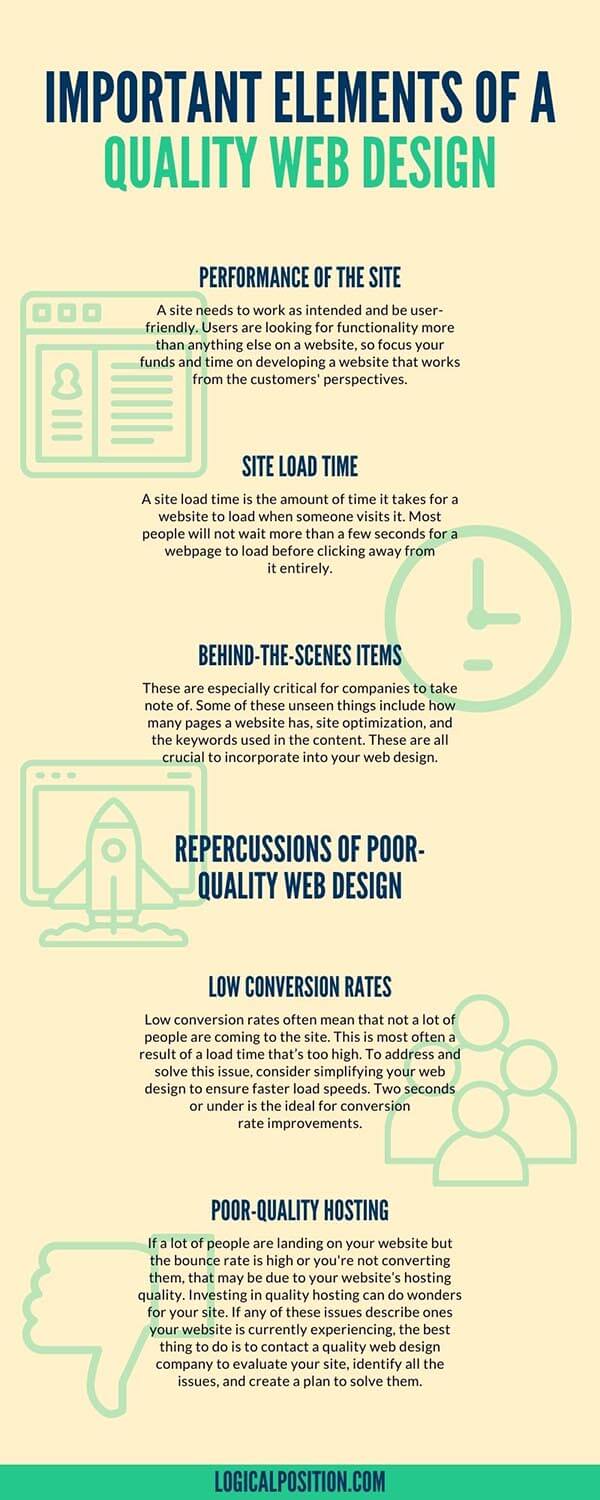
Other Important Elements of Web Design To Keep in Mind
Many different elements of web design are important to pay attention to and prioritize. Website rankings, functionality, user-friendliness, and much more all contribute to the overall conversions. Here are some additional expert tips to keep in mind when you’re pondering your web design.
- If your website has issues such as a high bounce rate, low conversions, or slow site speeds, don’t wait and hope it fixes itself—it will only get worse. Address issues quickly and effectively to avoid adverse consequences.
- Avoid making uninformed decisions or using the trial-and-error method. This can create lasting effects on your SEO and even flag your site if you make a mistake.
- Pay attention to bias in personal research. There’s no shame in not being a website wizard. There’s also a lot of false information about web design on the Internet. When in doubt, consult a professional.
A lot of things are important to consider when you’re thinking about your business’s website design. Website design is more accessible now than ever, but creating a well-coded site still takes a solid understanding of search engines, consumers, and coding. Optimization is visibility, and you need visibility for conversions. When you’re looking to build a new website for your business or you want to optimize and improve your company’s existing one, consider hiring well-versed professionals. At Logical Position, we build and optimize quality websites centered on the consumer. Users should know exactly what to do when they land on your website, and we will ensure that happens.
We are now offering diagnostic review and repair services where our professional team will review your website. Many businesses choose this option when they have concerns about their site or they’ve experienced a drastic downturn. It’s not uncommon for businesses to deal with developer abandonment, either. If any of these issues apply to your company’s website, contact us today. We’ll come in, take over access, and run a diagnostic review of your site. This includes the identification of specific links, security issues, and more. We then spend four hours addressing the specific issues you want fixed right away and provide you with an extensive report on everything we’ve completed on the site.
Contact Logical Position today for compressive, quality web design for your business.
